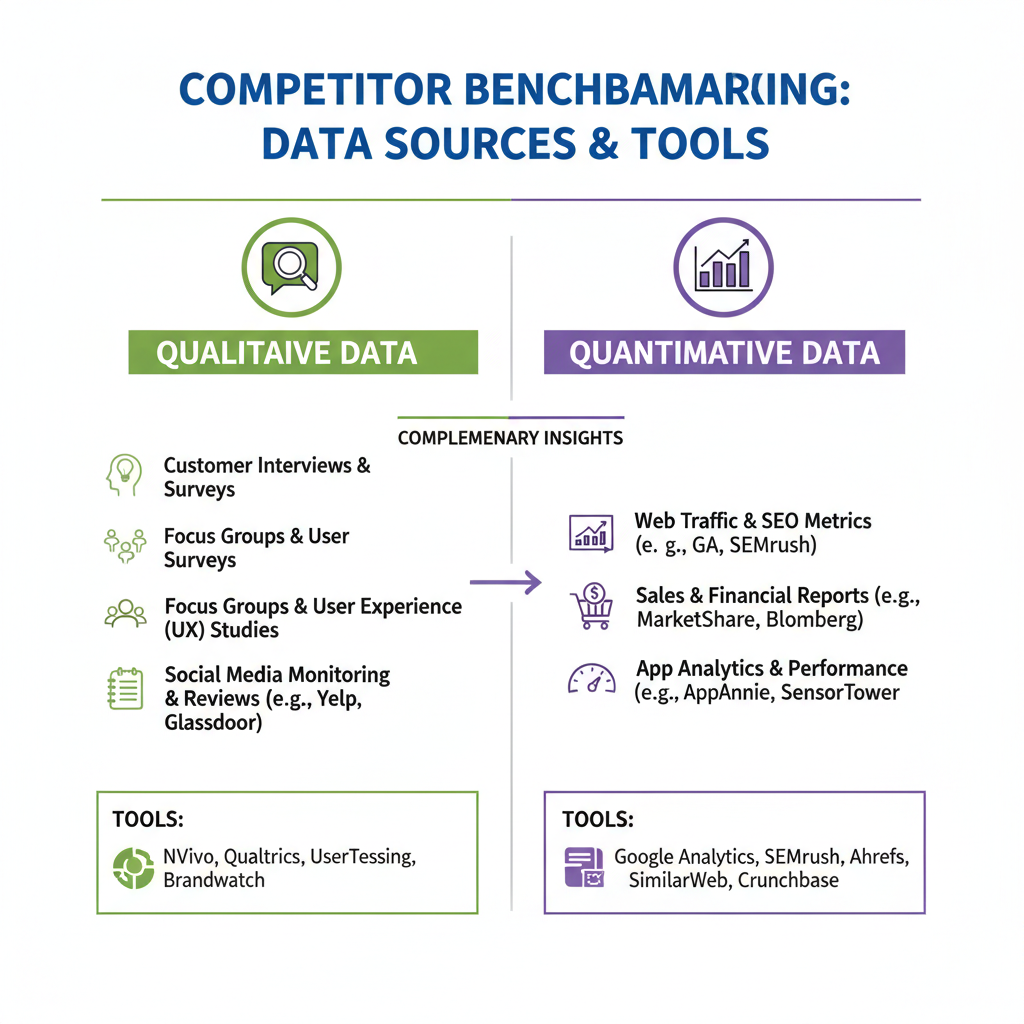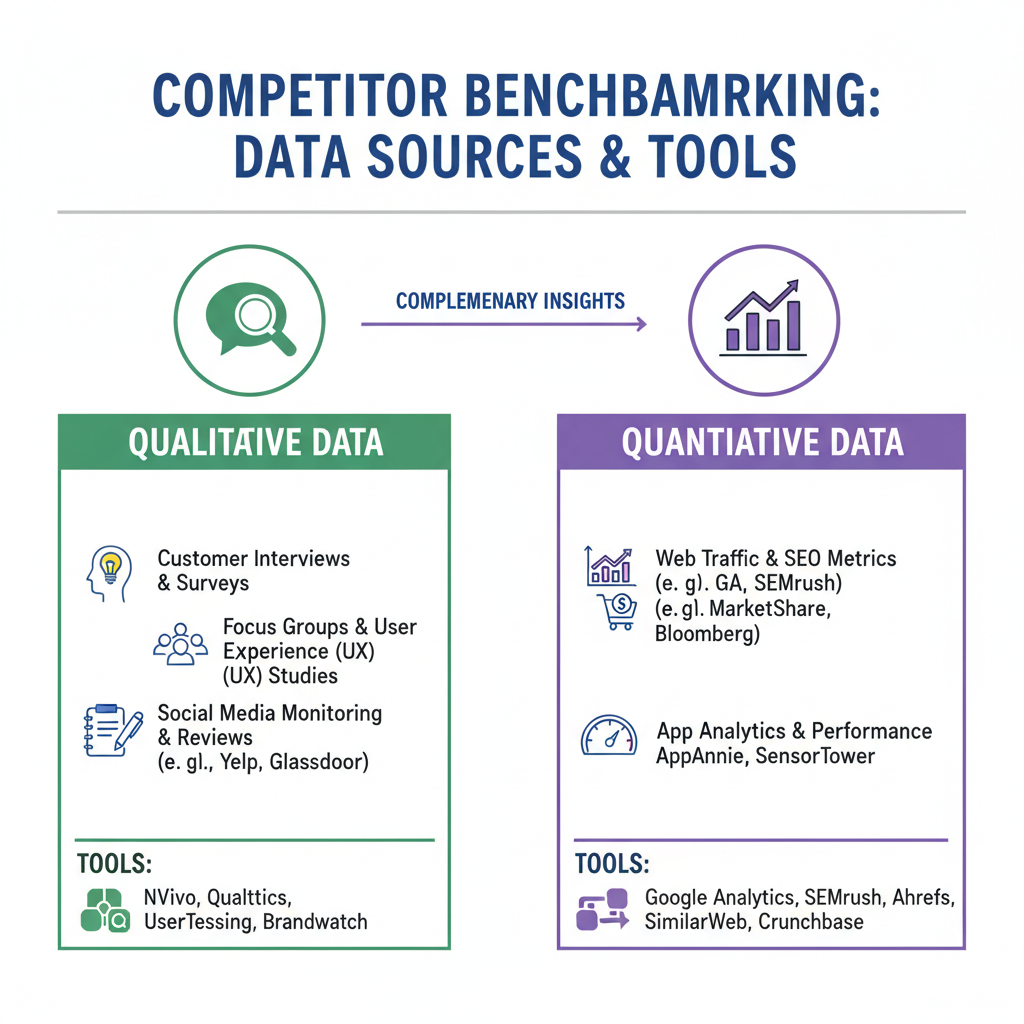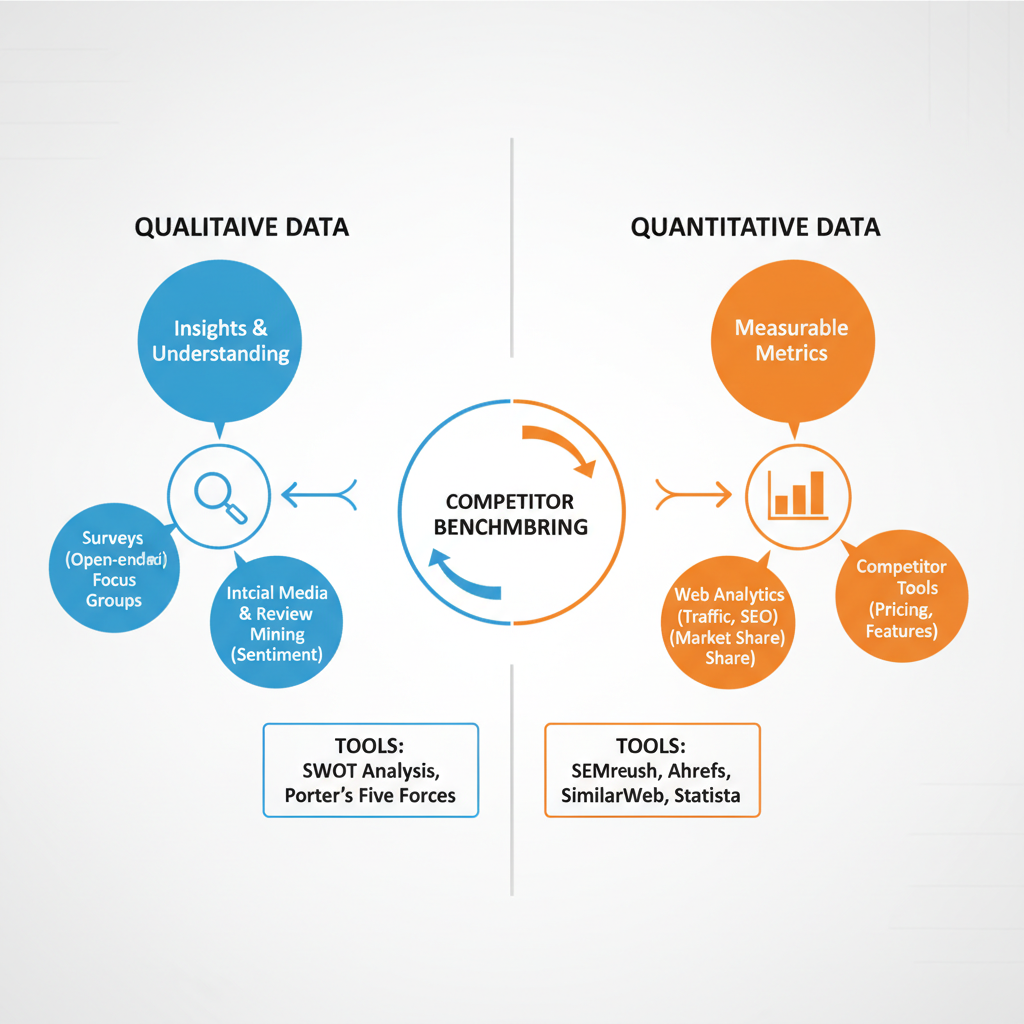How to Do Competitor Benchmarking Step by Step Guide
Learn the step-by-step process for competitor benchmarking, from setting KPIs and gathering data to using tools and SWOT analysis for insights.

How to Do Competitor Benchmarking: Step-by-Step Guide
Competitor benchmarking is a structured process that allows businesses to compare their performance against key rivals, uncover market opportunities, and sharpen strategic decision-making. In this guide, you’ll learn how to do competitor benchmarking from setting clear goals to monitoring progress—ensuring you can identify performance gaps and act on them to stay ahead.
By following these steps, your business can gather actionable, data-driven insights that inform smarter strategies and strengthen your competitive position.

---
Define Your Benchmarking Goals and KPIs
Before starting competitor analysis, clarify why you’re benchmarking. Set measurable, realistic goals that align with your overall business strategy.
Examples of goals:
- Increase organic website traffic by 30% within six months.
- Improve social media engagement rate to outperform industry average.
- Reduce cost per acquisition (CPA) by 15%.
Once your goals are decided, identify Key Performance Indicators (KPIs) to track progress, such as:
- Website traffic volume
- Organic search ranking for target keywords
- Conversion rate
- Customer retention rate
- Social media engagement
Upfront clarity ensures your benchmarking efforts remain focused and lead to actionable insights.
---
Identify Top Direct and Indirect Competitors
Knowing who to measure against is critical.
- Direct competitors: Brands offering similar products or services to the same target audience.
- Indirect competitors: Alternatives that satisfy the same customer needs differently.
Steps for identification:
- Search your product/service category on Google and note the top results.
- Review industry reports for market leaders.
- Ask customers about other brands they considered.
- Monitor relevant hashtags, groups, and discussions on social media.
A robust competitor list improves the accuracy of your analysis.

---
Collect Qualitative Data
Qualitative data highlights the non-numerical elements of competitors’ strategies.
Key qualitative areas:
- Brand messaging: Tone, language, and core promises.
- Positioning: Unique selling propositions and differentiators.
- Website UX: Navigation, design, and accessibility.
- Customer reviews: Sentiment patterns and recurring feedback.
- Content strategy: Blog topics, storytelling styles, and video usage.
Gather this intel by:
- Analyzing websites and marketing materials.
- Reviewing social media content tone and engagement style.
- Reading online reviews on sites like Trustpilot or G2.
---
Gather Quantitative Metrics
Quantitative benchmarking delivers objective numbers for direct comparison.
Examples of metrics:
- Product or service pricing
- Monthly website traffic
- Bounce rate percentage
- Social media follower growth
- SEO keyword rankings
- Email open and click-through rates
Summarize for easy comparison:
| Metric | Your Company | Competitor A | Competitor B |
|---|---|---|---|
| Monthly Visitors | 50,000 | 120,000 | 80,000 |
| Average Price | $49 | $59 | $45 |
| Bounce Rate | 38% | 45% | 35% |
| Instagram Engagement Rate | 1.5% | 2.3% | 1.8% |
---
Use Benchmarking Tools
Leverage modern tools to streamline your benchmarking:
- SEMrush: SEO and keyword tracking.
- SimilarWeb: Traffic source analysis and audience demographics.
- Ahrefs: Backlink and competitive keyword research.
- Sprout Social: Social media analytics and scheduling.
Example workflow: Use SimilarWeb for traffic source insights, SEMrush for keyword tracking, and Sprout Social for analysing engagement trends.
---
Analyze Competitor SWOT Factors
A SWOT analysis gives a holistic performance view:
- Strengths: Where competitors excel (e.g., brand loyalty, distribution).
- Weaknesses: Gaps such as poor mobile usability or slow shipping.
- Opportunities: Market or consumer trends to leverage.
- Threats: Risks from regulation changes or new market entrants.
Visual SWOT charts can clarify competitive positioning.

---
Map Competitor Benchmarks Against Your Own Metrics
After gathering data, map competitor KPIs to yours to identify variances.
Example actions:
- High bounce rate compared to competitors? Optimise UX and page load speed.
- Competitors ranking for valuable keywords? Develop targeted content to compete.
Radar charts or bar comparisons can highlight key differences.
---
Identify Performance Gaps and Prioritise Improvements
A structured gap analysis helps you focus efforts effectively.
Steps:
- Compare each metric against top competitors.
- Identify where you lag by 10% or more.
- Align these gaps with your business goals to prioritise.
This avoids diluting resources across low-impact areas.
---
Develop Action Plans from Insights
Turn analysis into strategic action:
Action plan essentials:
- Objectives: Define desired improvements and outcomes.
- Timelines: Establish achievable deadlines.
- Responsibility: Assign to specific team members.
- Resources: Detail tools, skills, and budget needed.
Example: Competitors gain more organic traffic from long-tail keywords:
- Build a keyword list.
- Assign content creation.
- Publish optimised articles over a 3-month period.
---
Continuously Monitor and Refresh Benchmarks
Competitors change strategies, so your benchmarking process must be ongoing.
- Update data quarterly.
- Track new industry players.
- Adjust KPIs as business priorities shift.
- Maintain a centralised competitor analysis document.
Proactive tracking ensures you adapt before competitors outpace your efforts.
---
Conclusion
Mastering how to do competitor benchmarking is about more than one-off analysis—it’s a recurring strategic discipline that drives growth and resilience. By combining qualitative insights and quantitative metrics, deploying the right tools, and acting on well-defined plans, you can keep your business agile and competitive.
Start implementing these steps today to transform competitive data into long-term advantage—and stay ahead in your industry.




